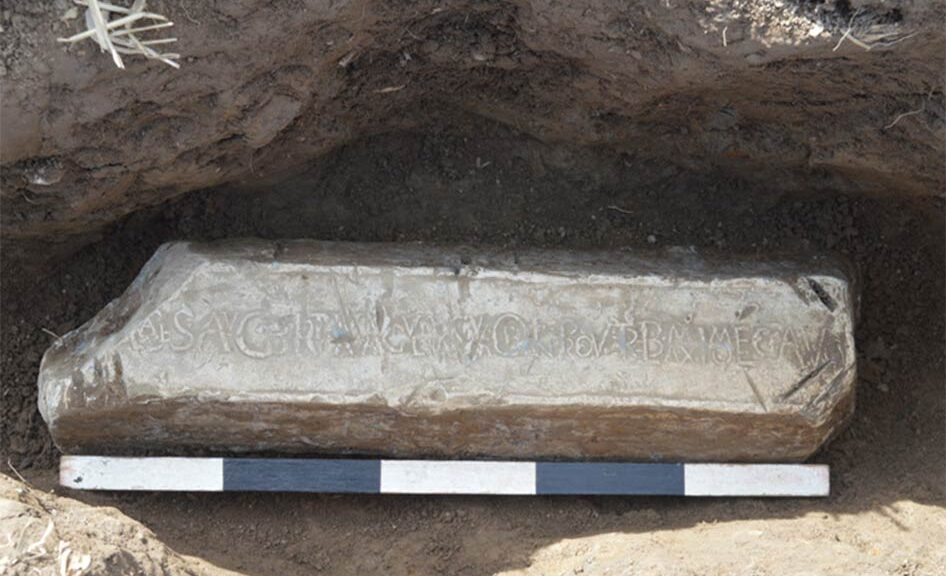In a field near Rossett, Rob Jones found the metal object, and a careful searching exposed the corner of a lead object with ‘writing’ on it.

The local find agent (NE Wales) has informed Mr. Jones who is from Codpoeth, Wrexham to the Wales Portable Antiquity Scheme (PAS Cymru) located in the Wrexham Museum. Archaeologists from both the Museum and the Clwyd-Powys Archaeological Trust assessed what had been discovered.
The item discovered was a large lead ingot (approximately half a meter long and 63 kilograms weighed). The ‘writing’ reported by Mr. Jones was a cast Latin inscription confirming that it was Roman and about 2,000 years old.

The discovery is assessed alongside its finder, Metal detectorist Rob Jones.
The exploitation of Britain’s natural resources was one of the reasons cited by Roman authors for the invasion of Britain by Emperor Claudius in AD 43.
Lead ore or galena contains silver as well as lead, and both were valuable commodities for the Romans. Less than a hundred lead ingots of this type are known from the mines of Roman Britain.
The rare find is particularly significant for archaeologists and historians because of its potentially early date, the location of the findspot, and because of its unique inscription.
The lead was mined and processed in several areas of the new province including in north-east Wales where lead processing sites have been excavated near Flint, presumably smelting ores extracted from the nearby Halkyn Mountain.
A number of lead ingots of slightly later date are known from these works, often marked with the name of the local pre-Roman tribe called the Deceangli.
Susie White, the local Finds Officer (NE Wales) said: “It has been suggested in the past that similar exploitation took place in the Wrexham area around Minera and particularly Ffrith, where there is a known Roman site, although clear evidence is absent, probably as the result of more recent mining activity.
“We don’t yet know where this ingot has come from and we will probably never know where it was going to. However given the find spots of other ingots from Britain of similar date, it may have been destined for continental Europe, perhaps even Rome itself. The object could tell us a great deal about this important period of our past, a period which is still poorly understood in this area of the country.”
The inscription appears to mention one Marcus Trebellius Maximus, who was the governor of the province of Britannia under Emperor Nero from AD 63-69.
If genuine, the Rossett find represents the only example of an inscription bearing his name ever found in the UK and one of very few from the empire as a whole.
Trebellius was partly responsible for bringing stability to Britannia after Boudica’s revolt in AD 60/1, although he was ultimately forced out of the province by mutinous Roman soldiers who were dissatisfied with the lack of military activity under his governorship.
Councillor Hugh Jones, Lead Member for People at Wrexham Council commented “I’m delighted to be able to announce that Wrexham museum has acquired the ingot and I’d like to thank the Arts Council England/V&A Purchase Grant Fund, the Headley Trust and the Friends of Wrexham Museums for their support with the acquisition which otherwise would not have been possible. Its acquisition will allow the ingot to be displayed in the town nearest to the place where it was lost and rediscovered.”
The museum together with the University of Chester is hoping to undertake archaeological work on the site of the discovery, as soon as the pandemic allows, to see if any further information can be gleaned as to the circumstances of its loss.





